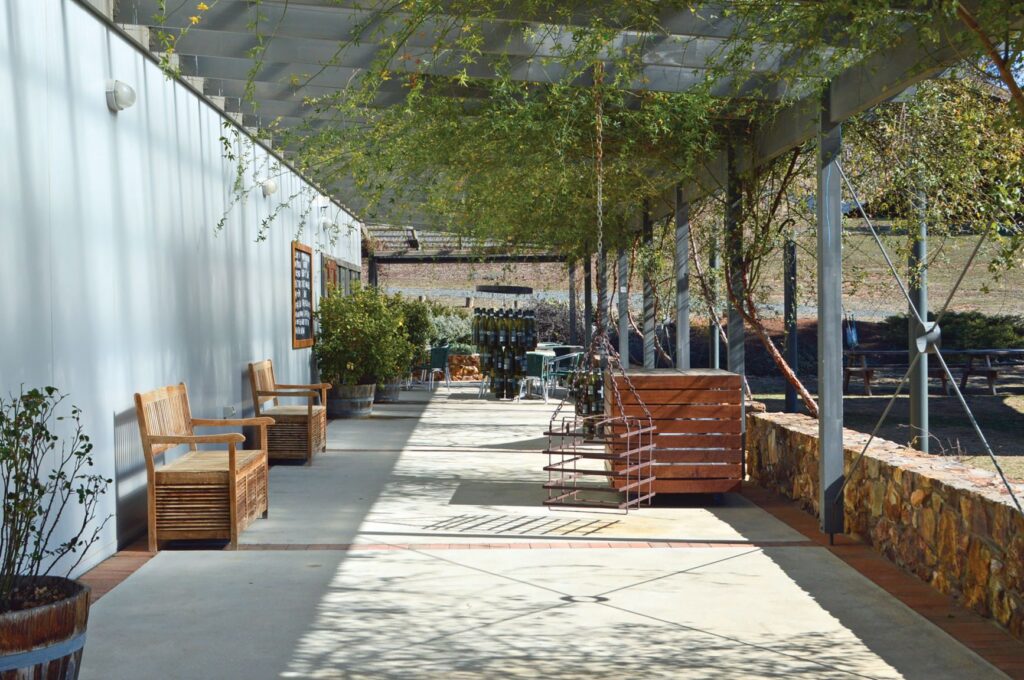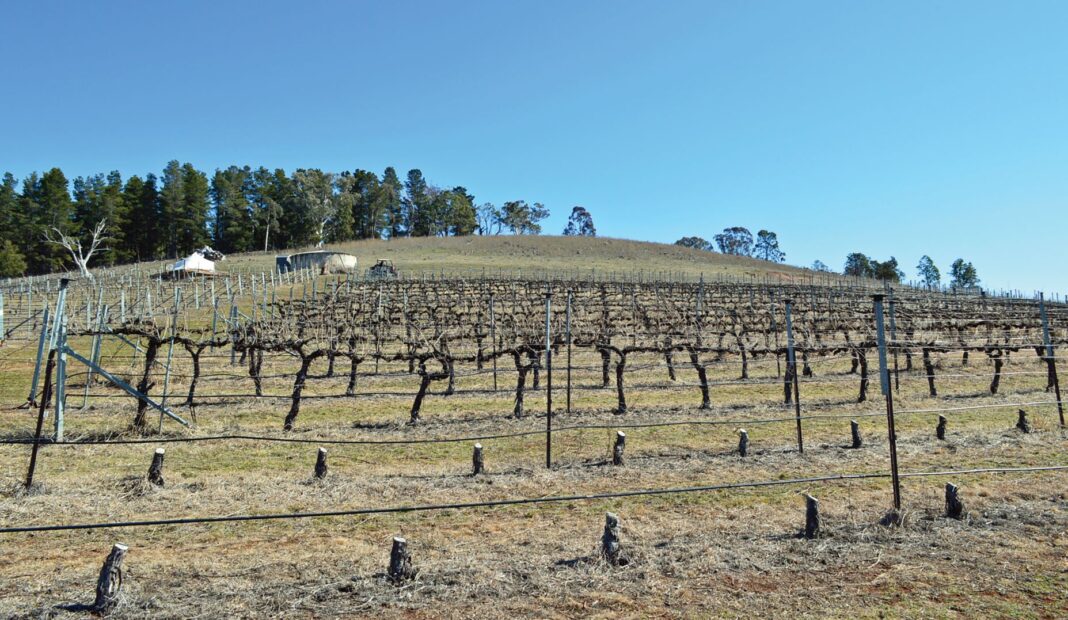I recently met winemaker Dr Frank van de Loo, general manager and part owner of Mount Majura Winery in Canberra. This local and boutique winery harvests an average of 80 tonnes of grapes annually, dependent on the season. Wine is mostly sold from the Cellar Door and throughout the Canberra region.
The 9.3 hectare site was specially selected due to its east-facing aspect and combination of volcanic and limestone bed rock, not unlike that found in Burgundy, France, famous for its wine production. The soil’s pH is neutral to slightly alkaline, ideal for growing grapes.
The first block of vines was established in 1988 with three varieties. There are now around nine varieties growing. These have been established from careful research and experimentation, finding the best varieties for the soil and climate, and most importantly, for top quality and unique wines.
Frank explained that the Canberra climate has allowed the winery to explore Spanish and Italian grape varieties, which are potentially better suited than French ones. Interestingly and equally as concerning, Frank said the early ripening varieties ripen around two months earlier these days due to our changing climate.
Preparation of the site involved deep ripping to 1m, removal of large boulders, and assessment/remedying soil nutrition such as addition of lime and phosphorous, which are slow to move in the soil.
Typically, the vines are grown 1.5m apart and with 2.7m between rows to maximise yield and quality. This equates to 2,600 plants per hectare and an average 10 tonne harvest per hectare. There is a focus on developing a vigorous plant during early establishment, involving optimum nutrition and organic matter being added to the soil. As the vines mature, a careful balance is struck between keeping plants healthy but not overvigorous, as it can negatively impact yield.

Foliage growth is moderated to promote fruit production. Foliage is also kept to a minimum where grapes are forming to maximise air circulation and sunlight received.
Pasture is kept short between the rows to eliminate competition while also protecting the soil. There is a small proportion of clover growing, which helps fix nitrogen in the soil and also feeds the yeast, essential in the wine making process.
Water is supplied by natural rainfall and a bore. The weather is monitored closely, particularly in the summer months to ensure vines are hydrated and resilient to predicted heat extremes.
Propagation of vines is carried out by both cuttings and grafting, dependent on the situation. Frank said putting cuttings upside down in sand promotes callousing and root formation as it is warmer towards the surface. Cuttings using this technique need to be dug out and planted before leaf nodes develop.
Frank expressed the seriousness of biosecurity at Mount Majura, particularly against the insect pest, grape phylloxera. The insect originated from North America and can prove detrimental, particularly to European grape varieties. It is commonly spread by machinery and people. Frank stresses the importance of hygiene and awareness by the general public in containing its spread.
Mount Majura Vineyard holds seasonal events and their Cellar Door is open seven days; www.mountmajura.com.au
For more:



